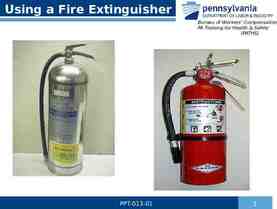ITS & Maritime Transportation AAPA Maritime Economic
9 Slides6.94 MB
ITS & Maritime Transportation AAPA Maritime Economic Development Committee Meeting October 23, 2016 Stephen Shafer Maritime Administration
Intelligent Transportation Systems (ITS) Technology convergence will revolutionize transportation, dramatically improving safety and mobility while reducing costs and environmental impacts Connected Vehicles Benefits Benefits Vehicle Automation Connected-Automated Vehicles Internet of Things Machine Learning Big Data Sharing Economy Smart Cities Order Order of of magnitude magnitude safety improvements safety improvements Reduced Reduced congestion congestion Reduced Reduced emissions emissions and and use use of of fossil fossil fuels fuels Improved Improved access access to to jobs jobs and and services services Reduced Reduced transportation transportation costs costs for for gov’t gov’t and and users users Improved Improved accessibility accessibility and and mobility mobility
Freight Beyond Traffic 2045: How will we move freight?
FAST Act: Freight and Logistics The FAST Act will Five year investment to improve of multimodal freight. 10.8 billion for FASTLANE and National Highway Freight Program Grants. 300 for the Advanced Transportation and Congestion Management Technologies Deployment Program (ITS Grants) Annual freight flow tonnage by National Highway System, Railroads, Inland Waterways (2010)
Need for Freight-Specific ITS Solutions Decisions are data-driven: System effectiveness is often limited by data availability and accuracy Technology not used uniformly across the industry Multimodal transportation has unique operational characteristics Freight terminals do not always share queue and shipment information Existing public resources do not always provide freight-specific information
ITS MARAD Program Phase 1: PreDeployment Preparation & Analysis Phase 2: Development & Demonstration Planning Phase 3: Demonstrations & Assessment Identify state of ITS in maritime transportation. Analyze gaps in current port-related ITS deployments Develop business cases for new ITS Identify a candidate set of promising applications for deployment and research in Phase 2. Begin prototype research and application development Conduct outreach with stakeholders including Maritime Administration Gateway Directors Identify and address institutional and policy issues Demonstrate or deploy ITS solutions for maritime usage Conduct Knowledge and technology transfer (KTT) to enable deployment to across domestic maritime facilities (e.g. ports, harbors, etc.
Questions on Maritime Transportation ITS Are dry and liquid bulk ports (especially energy ports) interested in ITS applications? If so, which applications? What are the critical challenges in port operations that could be addressed by better connectivity between ports, terminals, trucks, and the regional surface transportation system? Do you see other opportunities to leverage the emerging ITS applications being explored through the ITS JPO efforts I just described to you? Can we identify GAPS in port and local/regional surface transportation system connectivity?
Current Freight-Specific ITS Research Connected Vehicle Pilots Freight Advanced Traveler Information System (FRATIS) Smart Roadside Initiative Smart Truck Parking Automation – Including Truck Platooning Image Source: Auburn University
For More Information Stephen Shafer USDOT / Maritime Administration [email protected] Website: http://www.StrongPorts.gov














